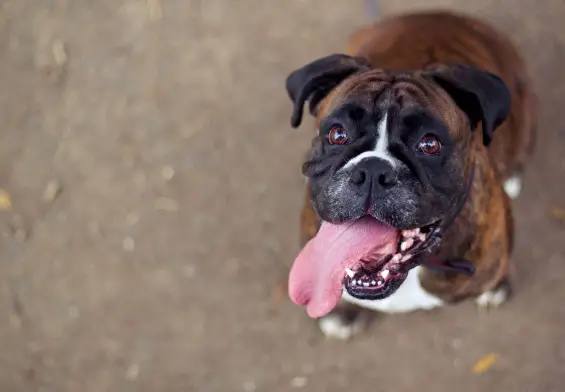My Dog Won’t Stop Biting His Tail & It’s Raw Bleeding
It is seen that dogs love chasing their own tail. However, some dogs have a habit of chewing and gnawing at the base of their own tail. They can bite their tail to such an extent that it may start to bleed. This leads to laceration which can be infected. Hence, these behaviors of dogs are generally discouraged. Thus, it is important that you know why dogs bite their own tail and what can you do to stop the dogs from hurting themselves.
Why Does My Dog Bite His Tail?
Dogs biting their tail is known as a very compulsive habit, which dogs like to do very often. In many situations the dogs may inflict injuries which are very serious upon them. They bite their tail with their teeth in such a manner that it leads to laceration which often bleeds and gets infected. There are many reasons why the dogs behave in such an abnormal way.
- External Parasites: When the dog bites its tail it may be because of a response to discomfort & itching caused by parasites. These parasites are generally arthropods such as ticks & fleas. These arthropods cause allergic reactions around the bite location. This then causes an itching and burning feeling which is because of the histamine release.
Due to this the dog bites the site in an attempt to scratch the area which is affected and lessen the comfort, this is when the dog starts to bite, causing the tail to bleed. It is also observed that the itching is around the anus and dogs start to chew the base of their tail, to ease the discomfort. If you think it is the fleas or the ticks which can cause the dog to bite their tail then you should start treating them with shampoos, which are medicated, and also use products that can help you completely remove them from your dog’s body.
- Allergic Reactions: The tail of the dog is mostly affected with dermatitis from various sources such as environment, pollen, chemicals used in the household, dust mites or mold. Even some dog shampoos can cause dermatitis, if the dog has a skin which is sensitive. Whether the inflammation is due to environmental conditions or due to pollen, the reaction to the allergy is severe when your dog’s age is within 3 months to 6-year-old.
Humans tend to scratch the infection and the same reactions are given by dogs. As they try to cure the allergy, they are unaware that they are making it worse. Also, for dogs with sensitive skin you should seek advice from your vet and use special shampoos recommended by your doctors for sensitive skin.
- Hot Spots: The places which are repeated more often chewed and bitten leads to an open wound and can be affected by secondary infection caused by bacteria leading to increase in the discomfort, thus increasing the chewing of the tail by the infected dog. You should speak to the veterinarian and seek advice on what needs to be done to treat it.
- Stress or Boredom: Dog’s do feel stress and even feel bored. Hence, many of them resolve to biting and chewing, leading to behavior such as tail biting. This is seen mostly in dogs which are caged for a long time in a day. Hence, they are mentally stressed and bored and as they have to move around, they start to chew their tail. If your dog is chewing its tail it’s because they are stressed. Make sure you take your dog out to get enough exercise and sufficient entertainment.
- Impacted Anal Glands: Another reason for your dog chewing the tail might be that the anal gland had been impacted. This condition is triggered when dog’s anal glands don’t empty them normally. The anal glands help them to secrete smelly fluids which helps them in social signaling. These ducts may be clogged or many times may be thick fluid which is stuck. Thus, causing your dog to chew their tail or even give out foul odors or even in some cases blood may be seen.
- Injury: If your dog has been injured in the rear body, for e.g., a broken bone or a tail which is fractured. The dog might not be able to tell his situation to the human. Due to this it remains unnoticed for a long time. However, the pain because of the injury keeps on increasing and the dog may try to attract your attention by biting its tail or licking the affected area. This can only be checked if a proper x-ray is done at a vet clinic and diagnoses the problem.
How Have You Been Dealing With Your Dog Tail Biting?
As you know that the dogs which chew their tails a lot, mainly the base of it can be prone to a varied variety of problems. There are many reasons that can cause a dog to bite. However, the good news is that by creating better hygiene in your dog, understanding what causes the allergy and treating their wounds, before they get the secondary infection can help your dog out of the habit of biting its tail. If your dog is infected by fleas or dermatitis or anal gland problems then treat the problem by consulting a vet and get the issue resolved.
Removal Behavior Triggers
If the behavior of tail biting is anyhow related to stress or boredom and you can relate the symptoms to stress. For e.g. your dog bites it tails when they are caged or responds to stimulus such as ringing of a doorbell then in these cases you can understand that it is stressed or bored.
Provide Your Dog with Safe Toys to Chew On
You can provide your dog with chew toys or treat dispensers that can give your dog things that are much better, safer and very healthy to chew on. The treat dispensers would also keep them busy and also be a source of entertainment for your dog as they would be curious about it the whole day.





